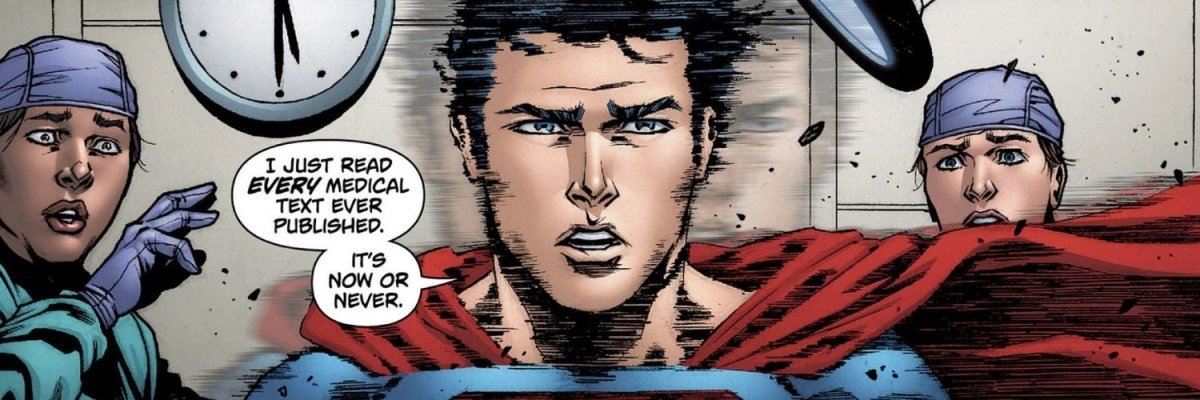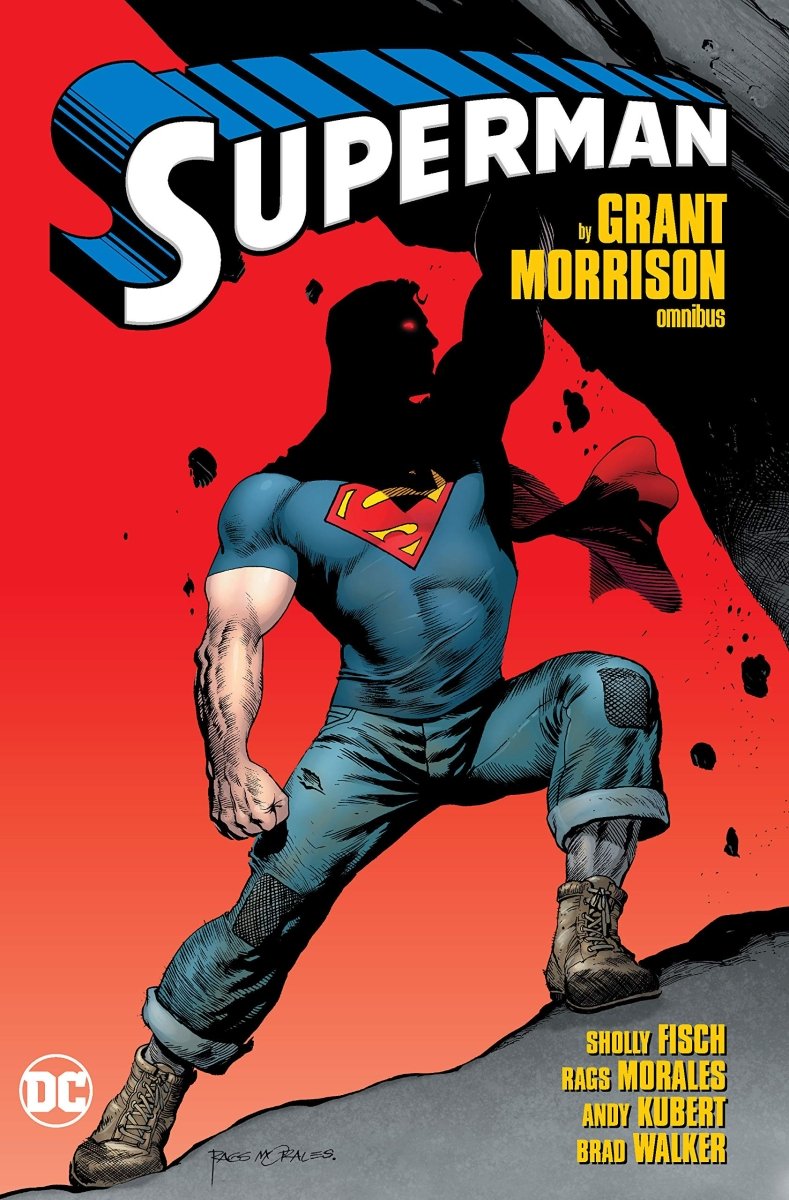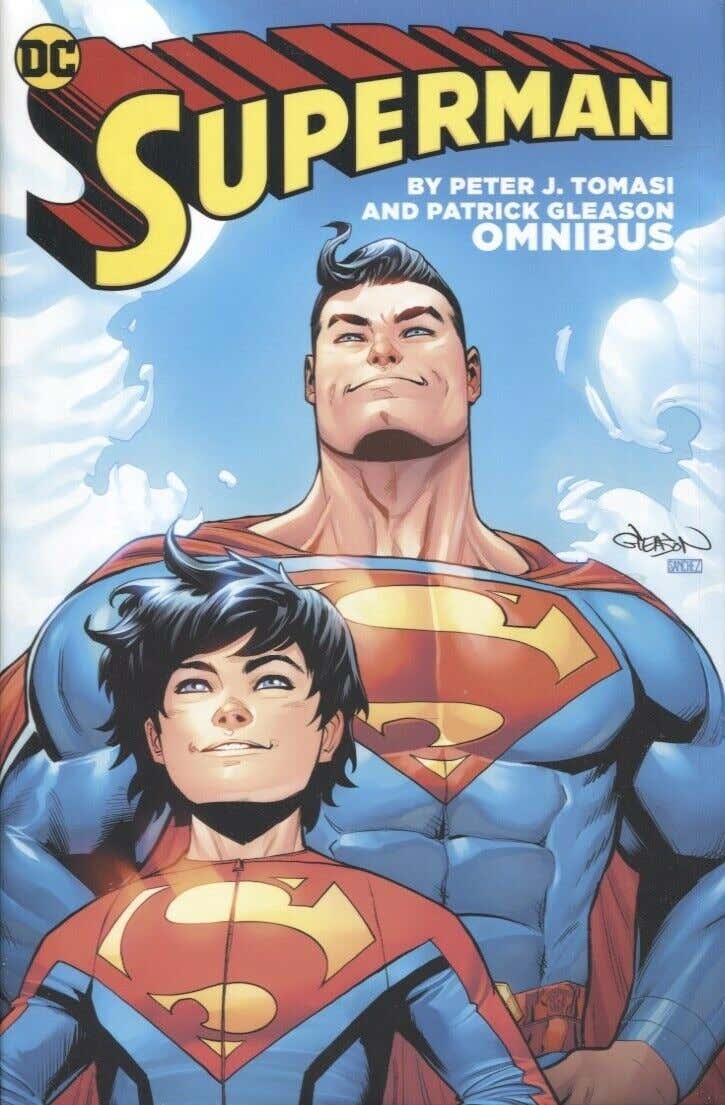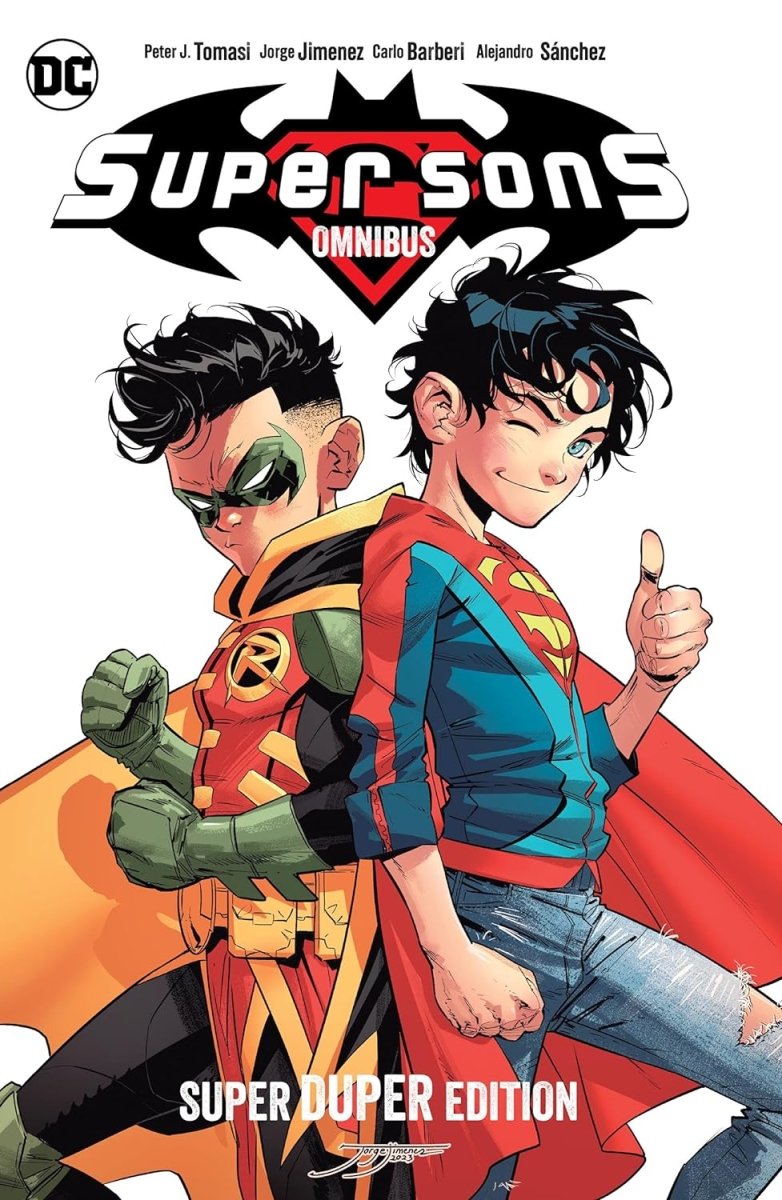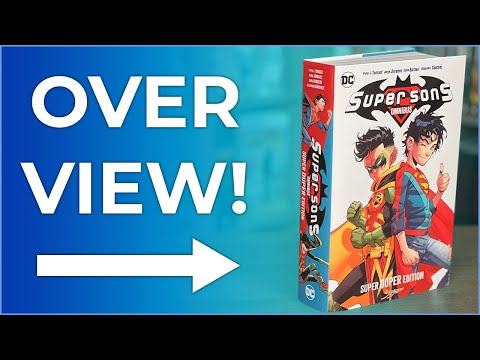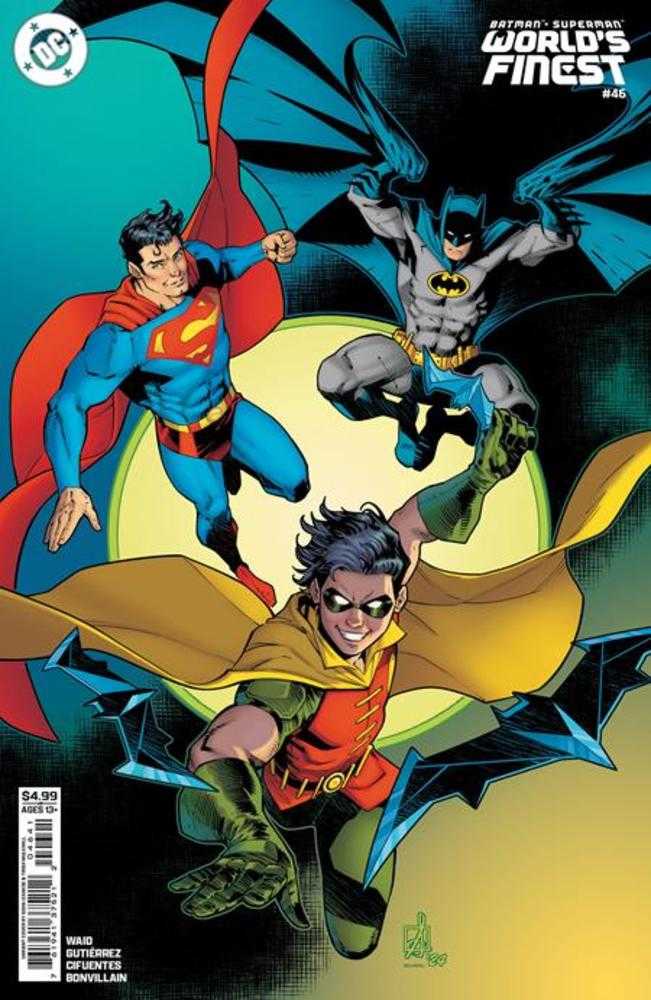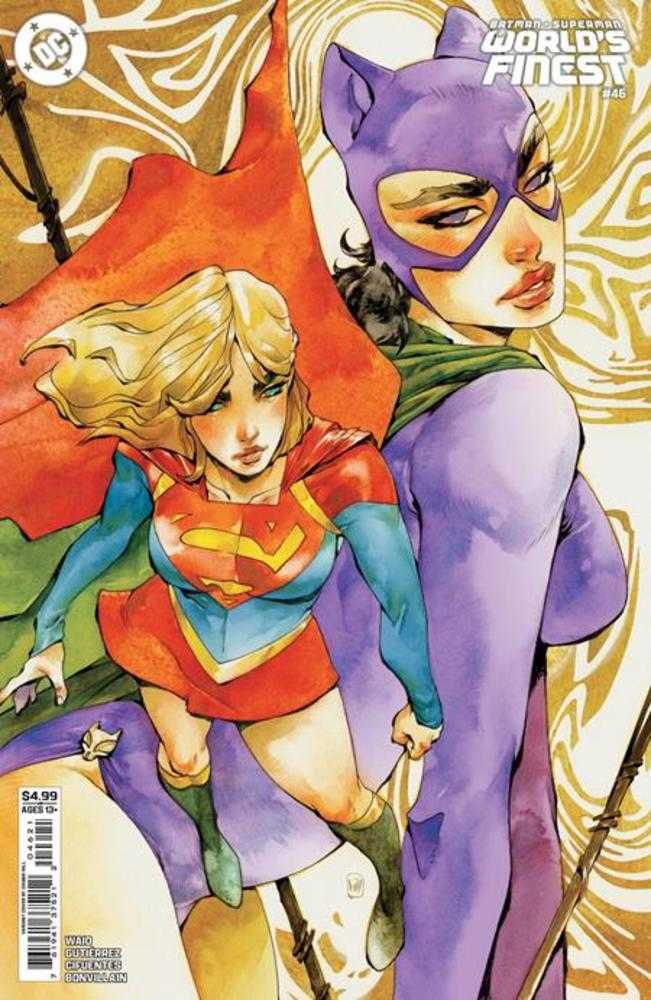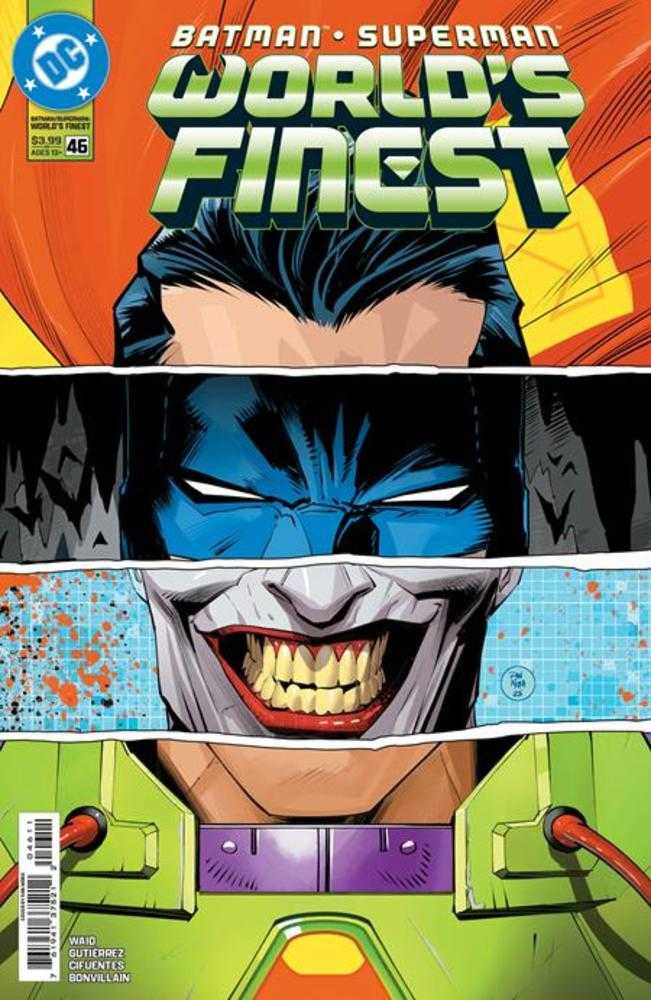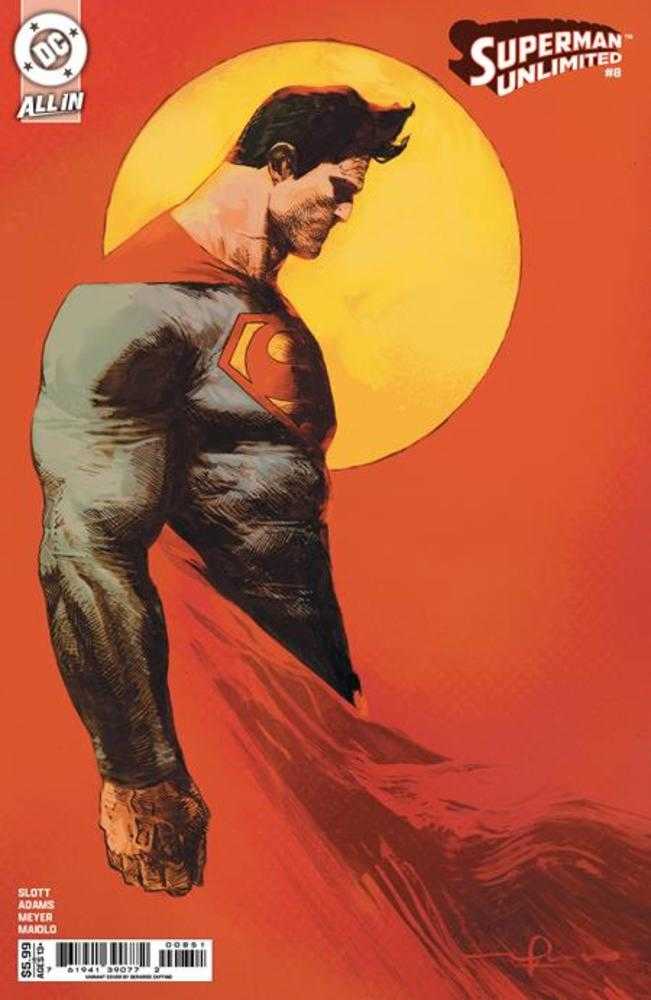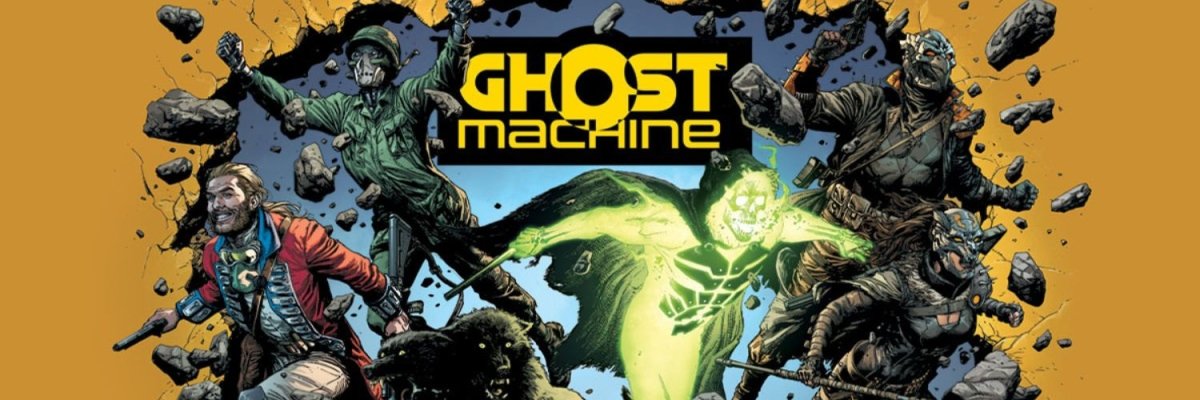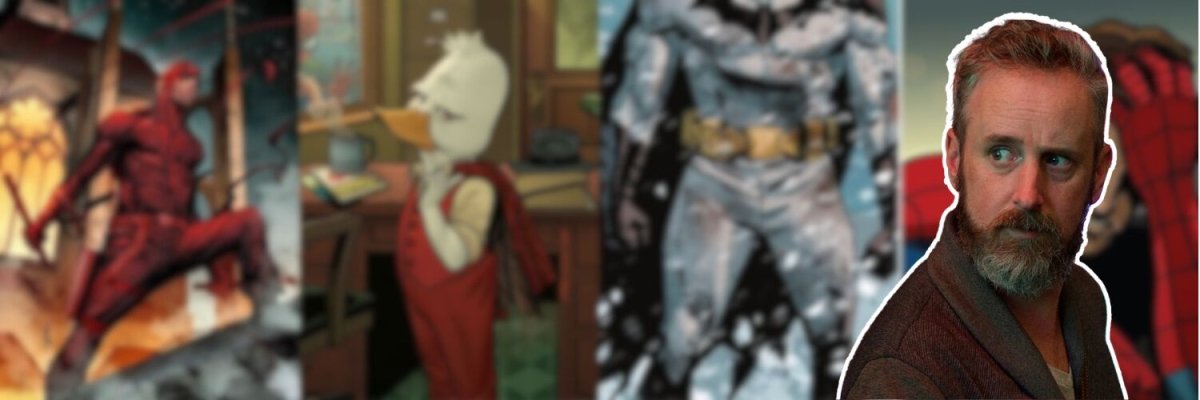Summer of Superman continues here at Walt's, and this time I wanted to get into the bigger collected editions, as in full-run sized Omnibuses. These all vary between creator-centered or publication era-specific. I know choosing an omnibus of a character can be a very confusing experience, mostly because it is expensive and you don't want to regret putting this money toward 1000+ pages of something you won't enjoy.
Luckily for us, almost all of the material DC chose to collect for Superman is pretty good. They all have different feelings to them, meaning there are a lot of approaches to this character, and you can simply dive into your favorite one. I think this is both a testament to how authors give their all to this character when they have the chance to write him, and also how DC is not publishing enough Superman in oversized hardcover editions for us to get into the “well, maybe this is not worth it” territory.
The thing is: almost every era has its fans, so it’s just a case of finding what matches your vibe, so you can take that leap and start collecting Superman in Omnibus format – and if you are here, I’m sure you are already on the verge of the building, ready for your “Superman will catch me if I fall” Lois Lane moment.
So here we go.
NEW 52 ONWARDS
Let’s start with the more recent runs, because all of them are basically tailor-made for jumping in.
Superman by Grant Morrison

You can dive into more of this rabbit hole in our Grant Morrison article, but here is the main gist: Morrison is both a historian of comics with encyclopedic knowledge of every issue ever published and a rebel ready to blow it up to test its boundaries. This is what DC was looking for when they hit reset on the continuity for the characters at the beginning of the New 52 initiative.
This Superman is more... radicalized, in a sense. Younger, brasher, jeans-and-T-shirt-wearing. Less about statues and speeches, more about standing up against the system for the little people. You will get your share of fourth-dimensional horrors in the same pages as heartfelt moments of Superman just being good. Morrison is writing a young Superman in the 21st century, and he will make it very clear to you, for better or for worse.
If you’re looking for Superman stripped back to his essence – his core ethics, his will to do right, his frustration with institutions – while still letting Morrison explore the myth in big, ambitious ways, this one’s for you. The Superman By Grant Morrison Omnibus collects the full Action Comics (2011) run, and it’s the perfect entry point for readers.
Superman by Peter J. Tomasi & Patrick Gleason

It's hard not to start by telling you how much I loved this. In context, the Rebirth initiative brings the old Superman back and was made to shine away from the Morrison and New 52 take, aiming to “fix” everything that was missing for long-time fans. But in practice, whatever editorial decision was behind it simply doesn't matter.
Tomasi and Gleason are barely interested in playing corporate games or even fan games of “This Superman is better than yours," instead focusing on opening their hearts to these characters and their stories. A beautifully crafted family story that will have you in a deep nostalgia frenzy for days gone by and a hopeful excitement for the future. It's nostalgia, yes, but framed in the act of passing forward. Because this is also the story of Superboy, Jonathan Kent, and by flipping the perspective from Clark as the young guy figuring out who he wants to be, it puts Clark in the role of trying to help his child see what he did, while also giving leeway for Jon to arrive at whatever hero he wants to be.
Gleason’s pages are long sunsets that stretch across the farm. It’s Jon’s feet barely lifting off the ground. It’s a family portrait that blends into the skyline itself. Red capes and blue uniforms. Red sons and blue skies. It’s simply mesmerizing.
Give it a chance. When fans of comic book heroes mention “comics magic,” this is exactly what they are talking about. You can get the full run in the Superman by Peter J. Tomasi & Patrick Gleason Omnibus or look for the Rebirth deluxe editions.
And if you really liked Jon Kent, then you will want to hear about the next one...
Super Sons by Peter J. Tomasi and Jorge Jimenez

The sheer brilliance of joining Jon with Damian Wayne should be enough to get a book going, but it is the wholesome approach Tomasi brings to every page that actually cements this as probably the best thing DC put out in the 2010s. Jon is a hopeful, full-of-energy kid who is more than excited to be the hero everyone wants him to be, and Damian Wayne is a grumpy, snarky little pain in the ass, ready to prove everyone wrong by being the hero no one ever expected him to be. And while it’s obviously a reframing of the relationship between Batman and Superman, the innocence and intensity of childhood add an extra layer of fun.
It feels like you’re reading an 80s Home Alone-style adventure while also being incredibly modern and about kids who feel like actual 21st-century kids. The banter between them is so funny, but the love and brotherhood they learn to nurture for each other is what will get you hooked for life.
It's impossible to leave this book without thinking, “Well, maybe every hero should have a kid.” The complete Super Sons run is available in the Super Sons Omnibus Super Duper Edition and is currently being reprinted in Complete Collections trade paperbacks.
Superman: Action Comics by Dan Jurgens

During Rebirth, while Tomasi was writing the definitive family book on Superman, Dan Jurgens was going all-in with Action Comics. This often gets overlooked because both runs were happening at the same time, but it is also very much a cool Superman book. And “cool” is the word. More Metropolis-focused, this brings back all the lore left behind in the New 52 and injects it with some dopamine. We have Doomsday back, an armor-wearing Luthor who now wants to call himself Superman, and a double Clark Kent mystery that gives Lois a chance to shine as well.
Truly a comic-book-comic-book reframed for modern audiences, bringing everything we always loved about good ol’ floppies. Jurgens basically says, “You’re paying for 24 pages of Action Comics, so you will get your 24 pages of Action Comics.”
It's getting collected in the Superman: Action Comics by Dan Jurgens Omnibus Vol. 1 this year, or you can look for the rebirth collected editions.
Superman by Phillip Kennedy Johnson

Phillip Kennedy Johnson catapults Superman back to the stars and, in doing so, makes him feel like comics’ biggest star – a place he should always occupy. We exchange Metropolis and Smallville for the Warworld Saga, truly one of the boldest, biggest, and most epic stories told about Superman in a long time. It reads like classic pulp sci-fi, like John Carter of Mars, in its exploration of Superman’s symbolic figure as a savior.
We often read about how Superman is akin to a god-figure, but we rarely get to see him act like it. Phillip Kennedy Johnson is also very clever in realizing that what makes these powers capable of so much symbolism is not fear and control, but rather hope and goodness in spite of fear and control – and it doesn’t matter if you strip away the man's powers, because the strength of his character is his true god-like, and god-defying, trait. He also expands on the family with the introduction of the Super-Twins (who I pray DC won’t throw away).
It will be available in the Superman By Phillip Kennedy Johnson Omnibus Vol. 1, or you can just get the full Warworld Saga. Phillip Kennedy Johnson is also coming back later this year to conclude his saga with Adventures of Superman: The Book of El, which you can pre-order through Manage Comics.
Superman by Joshua Williamson
That Superman story hasn’t gotten the Omnibus treatment – yet...
The most recent Joshua Williamson run leans into the classic Superman values: hope, truth, and the desire to protect everyone. It’s a tonal shift from the grittier or more cosmic stories of the past few years, offering a bright, energetic return to classic superhero storytelling, with modern twists and framing.

It takes elements from here and there and results in a very all-inclusive Superman cocktail, perfect for sipping. It starts with the first trade paperback, Supercorp, and continues deep into the All-In initiative, bringing Lois to the superpowered front in the Rise of the Superwoman trade paperback. Williamson is a master at combining different elements and making a fun book out of it.
Meanwhile, Action Comics is running a Superstars initiative with guest authors sharing their take on the character. That includes big names like Gail Simone (Birds of Prey, Secret Six, Uncanny X-Men), Jason Aaron (Thor, Avengers, Absolute Superman), John Ridley (Black Panther, I Am Batman), and G. Willow Wilson (Ms. Marvel, Poison Ivy), before Mark Waid takes over.
Also, Bendis' very unpopular run is an interesting read, even if just to see how Superman can sometimes not work very well. He ages up Jon, gives Superman’s identity away, and tries to bring a detective vibe back to Lois. The first two were, of course, deeply not well received. But I found myself enjoying some parts while clearly hating others, and you should just draw your own conclusions.
-----------------------------------------
MODERN AGE (Post-Crisis/Pre-New 52)
Sadly, not a lot of the Modern Age has been collected in omnibus format, but that is changing with a few titles releasing this year and onward. So let's take a look at each of them.
But before that, let's talk about John Byrne's run.
Superman by John Byrne
The true start of modern Superman comes with this (way before New 52) reboot, where superstar Byrne was tasked with retooling Superman’s origins for a new audience, and the first miniseries, Man of Steel, is an absolute classic. Part of the fun here is following Clark and seeing iconic moments unfold again. Superman slowly achieves his iconic status, but not only him — Luthor is also a villain in the making, just as Lois is still a character open to evolution. Stripping away the final legacy of the iconography helps with the construction of the legacy itself (hopefully I'm making sense to you here).
What I mean is that Byrne’s Superman is a great "building" comic, setting up things that are coming — and that you already know are coming — even if you only have a basic understanding of the character. I think this has always been my favorite aspect of this specific type of literature: the idea that it’s always building, always emerging. It should be an omnibus (hopefully it will be), but in the meantime, you can get the hardcovers.
- Superman The Man Of Steel HC Vol 01
- Superman The Man Of Steel HC Vol 02
- Superman The Man Of Steel HC Vol 03
Superman: Exile and Other Stories
Then, we move into the Superman: Exile and Other Stories Omnibus, which is a bit of a wild emotional ride. It’s an introspective arc for the character that took me a bit by surprise during my research.

Superman is a guy dealing with the consequences of his actions by doing something we all (somehow, stupidly) do — isolating himself. It’s an exile from Earth, but also a search for the man behind the powers.
We know Superman by now, but here Clark is looking to understand Superman himself and to find a reason he should exist. Yeah, man… that kind of vulnerability wasn’t always explored this deeply before, and it set a tone for how the character would be approached through much of the '90s.
There are alien worlds, soul-searching space travels, and the seeds of the emotional, cosmic sagas that would soon define Superman’s adventures. Gotta say, I was not expecting this — and that might have been my fault, because c'mon, this omnibus has Stern, Ordway, and Jurgens. A great surprise that should not have been a surprise.
Superman Triangle Era
And now can we hop into the Triangle Era, which DC is republishing with Superman The Triangle Era Omnibus Volume 1 and Superman The Triangle Era Omnibus Volume 2 (with more to come, hopefully).

By the late '80s and early '90s, the quantity of titles released for Superman was so huge that the creators realized that by collaborating, they could tell massive interconnected stories — and, of course, market and sell everything to fans more effectively. To avoid confusion (and also create necessity), they printed each comic with a small triangle in the corner indicating what part of the story that issue or title contained, meaning you had to read everything in a specific order to get the complete story.
This was a departure from the usual comic book idea that every issue should be independent, and it became one of the precursors to what modern comics are today, where big arcs take center stage (that is, until someone presents the independent issue idea as a novelty and the circle starts again).
Market babble aside, this era of stories is about commitment — commitment to characters, to continuity, to long-term storytelling, and to the simple but powerful idea that Superman matters, week in and week out. The Triangle Era can be described as a “Superman soap opera,” and that’s kind of perfect. Plot twists, big reveals, human drama. It’s not all about the villain of the week in Brainiac or Lex, though you’ll get plenty of that — it’s about how Clark juggles being a journalist, a fiancé, a friend, and the world’s greatest hero simultaneously.
The Death and Return of Superman
Then comes the big bad wolf: The Death and Return of Superman, available in (get ready): Death and Return of Superman Omnibus Edition, 30th Anniversary Deluxe Hardcover, Trade Paperback, Compendium and Absolute Edition with a Direct Market Variant that features his tombstone — something I'm telling myself I don't need, but will for sure get the second it comes out.

This has been adapted into at least four films and a few TV shows, and the description is kind of in the title there (sorry for the spoilers). This was the event to name events — and if Crisis on Infinite Earths and Secret Wars are groundbreakers, this kicks the Modern Age into a high-gear frenzy for the next big event. How can it get bigger than this? And I mean, it’s massive. There are a lot of titles, and I don't think I even came close to reading all the Funeral tie-ins yet. It’s a classic, of course, and an experience comics fans will want to have (even if we tell them it’s not that good).
It often comes up here at Walt's when we discuss how to approach recommendations on Beyond The Panels, because it’s the most famous story the character has ever had — but it’s also not new-reader-friendly in the slightest. So, here it is: Death of Superman. It’s a massive undertaking, and I both had fun with it and also felt very tired by the end. It absolutely should be mentioned though. And if you are deep into Superman, of course, read this for sure. If you are new, maybe check out our Graphic Novels article.
Superman: Our Worlds at War
Lastly, we have the Superman: Our Worlds at War Omnibus Vol. 1 - Prelude to War Omnibus coming up next year. This will open another gate into Superman storytelling.

This era is when the Triangle Era’s long-form commitment and the Byrne and Exile build-up and construction crash headfirst into blockbuster cosmic storytelling. This one is also huge, in both scale and emotional stakes. But what makes it stand out is how it blends that massive scope with personal cost. (And I'm really excited to do a proper dive-in when those eventually come out).
And then... so much more. And also... so much before.
-----------------------------------------
For now, here’s our article on the Modern Age omnibus. And yes, we couldn’t get into the Golden, Silver, or even Bronze Age properly without turning this article into a full-on book (hopefully we’ll get to them in the not-so-distant future). God, there are a lot of uncollected 2000s and onward stories that I would love to talk about with you guys. Will it ever end?
No. Because Superman is that timeless — a character who passed through different generations and will continue to do so. We can only hope that he will mean as much to those in the future (the ones in the "more") as he meant to us here in the now (the ones in the "before").

